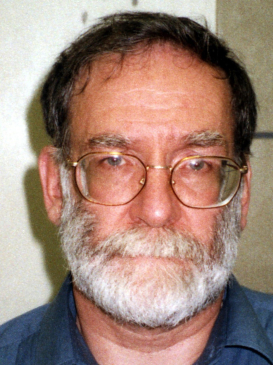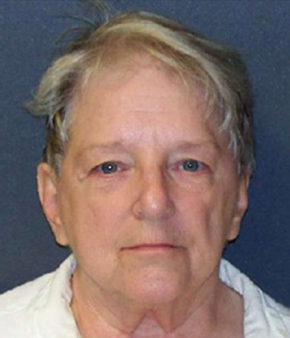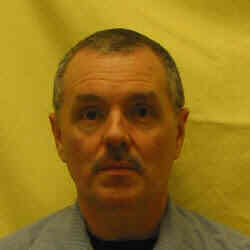Related Research Articles

A serial killer is a person who murders three or more people, with the killings taking place over a significant period of time between them. The serial killers' psychological gratification is the motivation for the killings, and many serial murders involve sexual contact with the victims at different points during the murder process. The Federal Bureau of Investigation (FBI) states that the motives of serial killers can include anger, thrill-seeking, financial gain, and attention seeking, and killings may be executed as such. The victims tend to have things in common such as, demographic profile, appearance, gender or race. The FBI will focus on particular patterns that the serial killers follow throughout their murders. They will then use on the patterns they find for key clues into finding the killer along with their motives. Although a serial killer is a distinct classification that differs from that of a mass murderer, spree killer, or contract killer, there are overlaps between them.

Harold Frederick Shipman, known to acquaintances as Fred Shipman, was an English general practitioner and serial killer. He is considered to be one of the most prolific serial killers in modern history, with an estimated 250 victims. On 31 January 2000, Shipman was found guilty of murdering fifteen patients under his care. He was sentenced to life imprisonment with a whole life order. Shipman hanged himself in his cell at HM Prison Wakefield, West Yorkshire, on 13 January 2004, aged 57.
Angel of Death may refer to:

Charles Edmund Cullen is an American serial killer. Cullen, a nurse, murdered dozens—possibly hundreds—of patients during a 16-year career spanning several New Jersey and Pennsylvania medical centers until being arrested in 2003. He confessed to committing as many as 40 murders at least 29 of which have been confirmed; though interviews with police, psychiatrists and journalists suggest he committed many more. Researchers who are intimately involved in the case believe Cullen may have murdered as many as 400 people. However, most murders cannot be confirmed due to lack of records.

Kristen Heather Gilbert is an American serial killer and former nurse who was convicted of four murders and two attempted murders of patients admitted to the Veterans Affairs Medical Center (VAMC) in Northampton, Massachusetts. She induced cardiac arrest in patients by injecting their intravenous therapy bags with lethal doses of epinephrine, commonly known as adrenaline, which is an untraceable heart stimulant. She would then respond to the coded emergency, often resuscitating the patients herself. Prosecutors said Gilbert was on duty for about half of the 350 deaths that occurred at the hospital from when she started working there in 1989, and that the odds of this merely being a coincidence was 1 in 100 million. However, her only confirmed victims were Stanley Jagodowski, Henry Hudon, Kenneth Cutting, and Edward Skwira.

Amy Duggan "Sister" Archer-Gilligan was a nursing home proprietor and serial killer from Windsor, Connecticut. She murdered at least five people by poisoning them. One of her victims was her second husband, Michael Gilligan; the others were residents of her nursing home.

Jane Toppan, nicknamed Jolly Jane, was an American serial killer who is known to have committed twelve murders in Massachusetts between 1895 and 1901. She confessed to thirty-one murders. The killings were carried out in Toppan's capacity as a nurse, targeting patients and their family members. Toppan, who admitted to have committed the murders to satisfy a sexual fetish, was quoted as saying that her ambition was "to have killed more people—helpless people—than any other man or woman who ever lived".

Genene Anne Jones is an American serial killer, responsible for the deaths of up to 60 infants and children in her care as a licensed vocational nurse during the 1970s and 1980s. In 1984, Jones was convicted of murder and injury to a child. She had used injections of digoxin, heparin, and later succinylcholine to induce medical crises in her patients, causing numerous deaths. The exact number of victims remains unknown; hospital officials allegedly misplaced and then destroyed records of Jones' activities, to prevent further litigation after Jones' first conviction.
Beverley Gail Allitt is an English serial killer who was convicted of murdering four infants, attempting to murder three others, and causing grievous bodily harm to a further six at Grantham and Kesteven Hospital, Lincolnshire between February and April 1991. She committed the murders as a State Enrolled Nurse on the hospital's children's ward.
"Autopsy" is a television series of HBO's America Undercover documentary series. Dr. Michael Baden, a real-life forensic pathologist, is the primary analyst, and has been personally involved in many of the cases that are reviewed.

Benjamin Geen is a British repeat murderer and former nurse who was convicted of killing two of his own patients and committing grievous bodily harm against 15 others while working at Horton General Hospital in Banbury, Oxfordshire in 2003 and 2004. Geen, who was believed to be motivated by his 'thrill-seeking' temperament, injected a number of patients with dangerous drugs in order to cause respiratory arrest so he could enjoy the 'thrill' of resuscitating them. He was apprehended after staff at the hospital noticed that it was always when he treated patients, most of whom only had minor injuries such as dislocated shoulders, that they inexplicably had respiratory failures. Upon his arrest, a syringe full of some of the drugs he used to attack patients was found on his person. When he saw officers approaching, he discharged the syringe contents into his jacket pocket in an attempt to hide the fact he had removed potentially lethal drugs from the hospital without authority. He was found guilty at trial in 2006 and sentenced to a minimum of 30 years imprisonment. All but one of the guilty verdicts against him were by unanimous jury decision.

Michael Joseph Swango is an American serial killer and physician who is estimated to have been involved in as many as 60 fatal poisonings of patients and colleagues, although he admitted to only causing four deaths. He was sentenced in 2000 to three consecutive life terms without the possibility of parole and is serving his sentence at ADX Florence at his own request.
Arnfinn Nesset is a Norwegian former nurse, nursing home manager, and a convicted serial killer. His crimes include the murders of at least 22 people, as well as attempted murder, document forgery, and embezzlement. He may have murdered up to 138 people. In 1983, he was convicted of poisoning 22 patients and sentenced to 21 years in prison. He served 12 years and 10 years supervision and is thought to be living under an assumed name.

Colin Campbell Norris is a Scottish serial killer and former nurse convicted for the murder of four elderly patients and attempted to murder another in two hospitals in Leeds, England in 2002.

Donald Harvey was an American serial killer who claimed to have murdered 87 people, though official estimates are between 37 and 47 victims. He was able to do this during his time as a hospital orderly. His spree took place between 1970 and 1987.
Jessie Gordon, formerly McTavish, is a Scottish retired nurse who was convicted in 1974 of murdering a patient with insulin, and of administering a variety of substances with intent to cause harm. The conviction was overturned on appeal in 1976. She was dubbed the "Angel of Death" by the press.

Orville Lynn Majors was a licensed practical nurse and serial killer who was convicted of murdering his patients in Clinton, Indiana. Though he was tried for only seven murders and convicted of six, he was believed to have caused additional deaths between 1993 and 1995, when he was employed by the hospital at which the deaths occurred and for which he was investigated. It was reported that he murdered patients who he claimed were demanding, whiny, or disproportionately adding to his work load.

Lizzie Halliday was an Irish-American serial killer responsible for the deaths of four people in upstate New York during the 1890s. In 1894, she became the first woman to be sentenced to death by the electric chair. Halliday's sentence was commuted and she spent the rest of her life in a mental institution. She killed a nurse while institutionalized and is speculated to have killed her first two husbands.
References
- 1 2 Vronsky (2007), pp. 1, 42-43
- 1 2 Schechter and Everitt, p. 312
- 1 2 3 "Angels of Death". Crime Library. Archived from the original on 18 December 2008. Retrieved 30 December 2008.
- ↑ Andresen, BD.; Alcaraz, A.; Grant, PM. (January 2005). "The application of pancuronium bromide (Pavulon) forensic analyses to tissue samples from an "Angel of Death" investigation". Journal of Forensic Sciences. 50 (1): 215–219. doi:10.1520/JFS2003353. PMID 15831022. S2CID 256144.
- ↑ Sitpond
- ↑ Whittle and Ritchie
- ↑ Linedecker
- ↑ Hickey (1997), p. 142
- 1 2 3 Holmes, Ronald, & Holmes, Stephen. (2009). Serial murder. Sage Publications, Inc.
- ↑ Fox, James Allen; Levin, Jack A.; Quinet, Kenna (March 22, 2018). Will to Kill, The: Making Sense of Senseless Murder, 5th Edition. Newbury Park, California: SAGE Publications. p. 308. ISBN 978-1506365961.
- ↑ "Shipman's 215 victims". BBC News. 2004-01-13. Archived from the original on 2009-05-24. Retrieved 2008-09-24.
- ↑ Cullen, Pamela (2004). A Stranger in Blood The Story of Dr Bodkin Adams. Elliott & Thompson, Limited. ISBN 978-1-904027-19-5.
- ↑ Yorker, B., Kizer, K., Lampe, P., Forrest, A., Lannan, J., & Russell, D. (2006). "Serial Murder by Healthcare Professionals". Journal of Forensic Sciences, 51(6), 1362-1371.
- ↑ "The Mediadrome - History - American Gothic: H.H. Holmes". www.themediadrome.com. Archived from the original on January 28, 2010.
- ↑ Bunyan, Nigel (2001-06-16). "The Killing Fields of Harold Shipman". The Daily Telegraph. London.
- ↑ Wolf, Matt (2003-02-28). "Arsenic and Old Lace". Variety. Retrieved 2017-10-04.
- ↑ STABINER, KAREN (1987-05-10). "Best Seller Preview : The Misery of Stephen King". Los Angeles Times. ISSN 0458-3035 . Retrieved 2017-10-04.
- ↑ Fear Factory – Demanufacture , retrieved 2024-05-05
- ↑ "The Cremator: "No One Will Suffer"".
- ↑ Baugher Milas, Lacy. "Yellowjackets: Unraveling the Terrifying, Fascinating Misty Quigley".